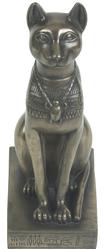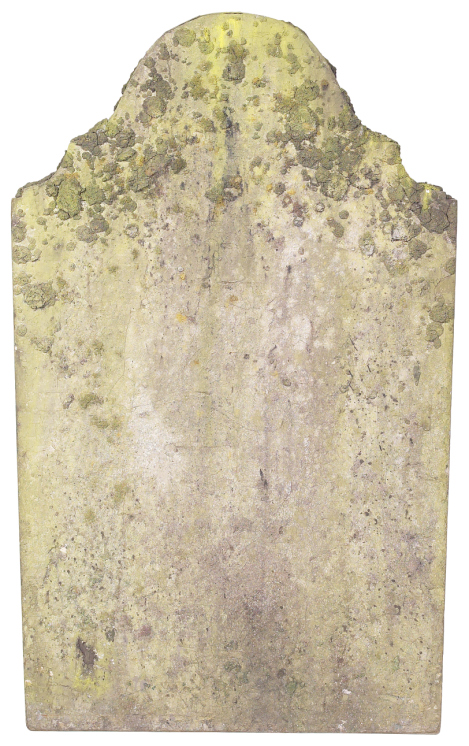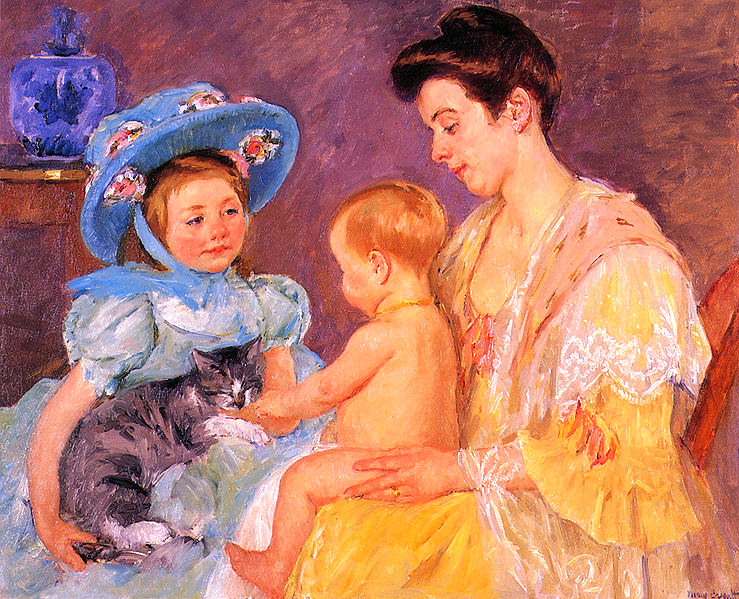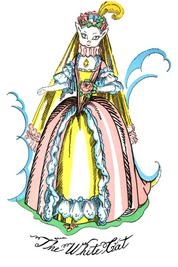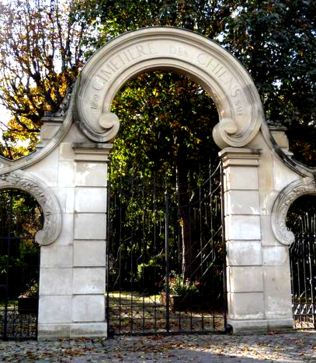Women's Travel Abroad
One Contented
Tabby
Cat
In
Montmartre
Cemetery
Paris
Mary Cassatt, Children Playing With a Cat, 1908
Private Collection
The God Bast
Ancient Egypt
Louvre Museum, Paris
and
Other French Fairy Tales
Drawing by E. Mackinsky
Parisian cats are elusive creatures - a trait they share with their cousins worldwide. Spotting one is difficult unless you know someone in the city who has one. My daytime or night time my encounters with them have been few and far between.
However, I was told that at one time there was a huge population of them at the cemetery on Montmartre. The local residents fed and cared for them until the numbers increased beyond feasible limits. Now only a few are left in the cemetery and they are very wary of people. The cats sleep nestled in urns atop tombs or hidden in the miniature houses so typical of French cemeteries.
Mary Cassatt (1844 - 1926) an American painter, spent many years in Paris working with other influential artists of her time. Arriving in Paris with her sister and mother in 1866 she applied and was accepted at the Ecole des Beaux-Arts. Part of her learning time was spent copying paintings at the Louvre Museum.
In 1866 Degas invited her to show her pictures at an exhibition of Impressionistic art. It took some years for her career to take off. By the time it did she had experimented with many art forms and materials. She lived her life out in Paris, becoming famous for her many paintings of women and children including this one which features a cat.
Women's Travel Abroad
For Women About Women By Women
Cat-a-Log
Montmatre cemetery is just one place where you can see lots of cats albeit the ones in the Cemetery of Dogs and Other Domestic Animals are no longer alive. It was opened in 1899 so Parisians had a safe and sanitary place to inter their animal companions. It is reputed to be the oldest pet graveyard in Europe and idea three Parisians: journalist Marguerite Durand, writer Emile Zola, and lawyer George Harmois. With money donated by other sympathizers the trio bought an island in the Seine River, the L'ile des Ravageurs, near Aisners-sur-Seine.
The cemetery was established to be a respectful and hygienic final resting place for all kinds of pets. Up until 1899 small pets were dumped on the trash pile, thrown into the Seine, or sold to doctors for dissection. Horses, on the other hand, were taken to the glue works or skinned for their hides. Outraged Parisians protested these unsanitary and inhumane practices. A bill was legislated to let pet owners to bury their deceased animals in a place that met certain sanitary requirements. So here rests Durand's horse, Zola's dog, and many other pets like Mr. Louis the beautiful cat.
People seem to have had close relationships with cats back to antiquity. They have been the subject of worship in ancient Egypt and revered as beloved companions for thousands of years. Certainly cats are good mousers but it is an almost mystical bond between them and us that makes them so endearing.
Artists have been sculpting, painting, and writing about cats since ancient times. Perhaps one of the most famous is the sculpture of Bast, the sacred cat of the Egyptian goddess Isis, which can be seen at the Louvre Museum in Paris. It is likely there were images of sacred cats at the Temple of Isis and Ceres in Paris, now the site of the church of Saint Germain-des-Pres on the west bank, during Gallo-Roman era (45 BC to 450 AD). It is even possible there may have been cats actually living at the site.
A Parisian author of religious tracts, historical novels, and personal memoirs, Marie-Catherine le Jumel de Barneville, Baroness d'Alnoy (1651 - 1705) was also enchanted by cats. Among her works is a charming romance story of a lovely white cat and the man who loves her.
Married at the age of seventeen to a man almost thirty years older than her it is easy to imagine why a story like The White Cat would have great appeal to the baroness d'Alnoy. While the marriage was said to be loveless she did have six children with her husband.
The White Cat, an adult fairy tale, was published in 1698. It was written in a conversational style and meant to be read for entertainment at informal home gatherings of family and friends. Her fairy tale stories were published almost 130 years before the brothers Grimm began writing down their tales.
Even today the fairy stories of the Baroness d'Alnoy are still read and cherished. The first publication of The White Cat and Other French Fairy Tales has been translated, edited, illustrated, and published many times. Recently a collection of three of this author's fairy tales, leather bound English translations published in London in 1737, were offered for sale online at $8, 500. Newer copies can be purchased for much less or you can go to the Gutenberg project website and read them online for free.
Years later, during the Impressionist movement in France, artists from all over the world flocked to Paris to study with the master painters. Among those who left their homeland to explore this new genre of artistic expression was Mary Cassatt. Her oil paintings of mothers and children now hang on the walls of public art museums and homes of private collectors. Perhaps one of the most endearing is Children With a Cat painted by her in 1908.
You Are Welcome to Contact Me Personally With Comments or Questions
Copyright 2017 Creative Travel Publications, LLC
Trip Tips
